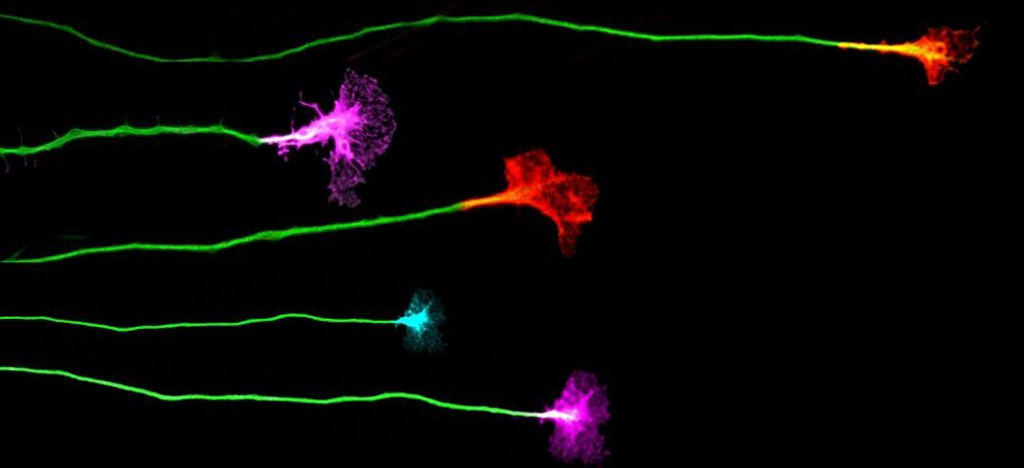Zic2 Controls the Migration of Specific Neuronal Populations in the Developing Forebrain
Human mutations in ZIC2 have been identified in patients with holoprosencephaly and schizophrenia. Similarly, Zic2 mutant mice exhibit holoprosencephaly in homozygosis and behavioral and morphological schizophrenic phenotypes associated with forebrain defects in heterozygosis. Despite the devastating effects of mutations in Zic2, the cellular and molecular mechanisms that provoke Zic2-deficiency phenotypes are yet unclear. Here, we report a novel role for this transcription factor in the migration of three different types of forebrain neurons: the Cajal–Retzius cells that populate the surface of the telencephalic vesicles, an amygdaloid group of cells originated in the caudal pole of the telencephalic pallium, and a cell population that travels from the prethalamic neuroepithelium to the ventral lateral geniculate nucleus. Our results also suggest that the receptor EphB1, previously identified as a Zic2 target, may mediate, at least partially, Zic2-dependent migratory events. According to these results, we propose that deficiencies in cell motility and guidance contribute to most of the forebrain pathologies associated with Zic2 mutations.
SIGNIFICANCE STATEMENT Although the phenotype of Zic2 mutant individuals was reported more than 10 years ago, until now, the main function of this transcription factor during early development has not been precisely defined. Here, we reveal a previously unknown role for Zic2 in the migration of forebrain neurons such as Cajal–Retzius cells, interneurons moving to the ventral lateral geniculate nucleus, and neocortical cells going to the amygdala. We believe that the role of this transcription factor in certain populations of migratory cells contributes to defects in cortical layering and hypocellularity in the ventral LGN and amygdala and will contribute to our understanding of the devastating phenotypes associated with Zic2 mutations in both humans and mice.

 Español
Español
